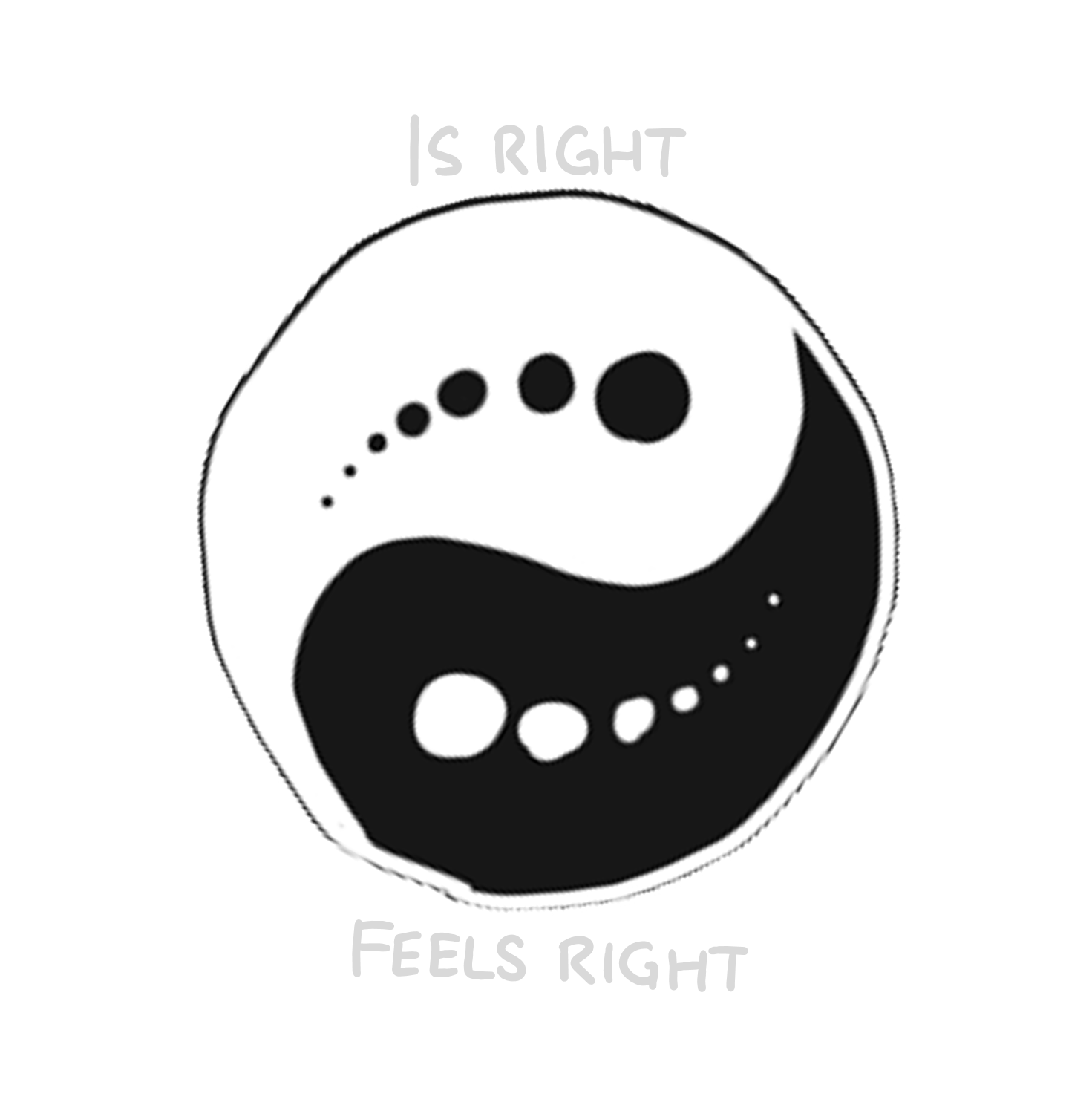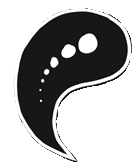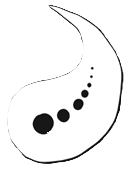Read this if you're ready to take on the Habit Reframe Method—and want to make it crystal clear what you're commiting to.
If there's one thing I've learned, after struggling for 15+ years with brutal procrastination and bad habits, it's absolutely critical to first gain clarity as to what it is you are seeking when you promise to get disciplined.
Instead, we tend to have this vague notion that, "if I get disciplined", good stuff will come and bad stuff will be avoided. Though true enough, none of that is clear, so when it comes time to make any one of the thousands of decisions that actually count—should I eat this donut… should I watch another episode instead of exercise… should I put off starting on my work by checking Youtube—you’ll have nothing concrete and coveted to point to, so it becomes easy and automatic to say “NO… I don’t want that basic crap. I want this instead…”.
In other words,, you'll end up rationalizing your old troublesome behavior because you'll have no clear view of what's at stake. That vague notion that things will be better if you stick with your promises won't be a good enough motivator. If it was, you would have kept last year’s New Years resolutions. You need something better.
So here is what’s massively helped me gain clarity of what’s actually at stake in my life.
It’s quite simple. I all comes down to is making a choice. To help illustrate this coice, I’ve borrowed and modified the Yin and Yang symbol from Chinese philosophy:

In life, you can take the path that Feels Right, or the path that Is Right.
The Feels Right path (black half with the white dots) is the easiest and most obvious path to take. It features white dots of reward and pleasure: little gumdrop moments of gratification. Who wouldn’t want that? It’s what we choose by default.

But the backdrop is black. It’s dark and dismal. Often miserable. When you’re on the Feels Right path, and when you’re not mindlessly inserting food in your mouth or urgently tapping at Reddit for a fix of fresh links, you might notice that background refrigerator hum of anxiety. Or else regret, worry, longing, craving…
The Feels Right path is a life of pain and suffering—a reverse nightmare that begins only when you snap awake from your latest vice-induced trance.
And yet, it’s not so bad, because the darkness and pain can be quickly quelled by another quick dose of instant pleasure. With our modern vices, there's always another means to escape.
Over the long term, though, the 'Feels Right' path leads to a life of mediocrity: a life of artificial experiences and vicarious living; a life void of any substance; a life of mere survival.
-+-+-
The Is Right path (white half with the black dots) is the opposite.

It is characterized by the tranquil mental backdrop we all seek. A clear and content headspace. A calm and grateful temperament.
On the Is Right path, the destination is not having this nor is it getting that—it’s not even succeeding or enjoying the many fruits of your labor—although that may very well be a result. It’s simply the blissful absence of wanting. Of being okay with what is in the here and now. Of not being anxious or regretful or consumed by desire.
There are, however, unavoidable black dots scattered along the Is Right path. This is discomfort.
If you choose the Is Right path, if you decide to strive for that peaceful backdrop of happiness, you have to learn to expect, confront, and deal with pointed moments, or “dots,” of discomfort. You must learn to observe them rather than relieve them with vices; to experience discomfort rather than seek distraction and escape.
To get the peaceful white of the Is Right path—to transcend mere survival and start thriving—you must experience the black dots of discomfort.
Seek Discomfort
We all have background pain in our lives, from regrets about past mistakes to anxieties and lamentations about change and inevitable loss. This, we might say, is the grim and inextricable part of the human condition.
Then, there’s what we might call “optional” discomforts: the hard stuff you do that inches you towards your goals, like stepping out of your comfort zone, being vulnerable to rejection, exerting yourself physically, seeking to mend and improve relationships, seeking to resolve past trauma and wounds, or doing something for the benefit of others.
As humans, we are programmed to avoid all types of pain and discomfort. We’ve learned that we can defer the optional ones and pacify the mandatory ones with our vices.
So, actively choosing the path that Is Right is no easy picnic.
It’s going to be uncomfortable. It’s going to sting. You’re going to be met with a million reasons why you should quit.
The point though is that you can’t have both white components of the symbol. You can’t have endless happiness plus limitless dots of pleasure. You can’t have a life filled with a conga line of titillation and reward, void of all discomfort, while also being happy and at peace. These are fantasies.
But the thing is—and this is the reason why the Yin and Yang symbol was modified to show dots of decreasing size—both the pleasure and the discomfort will tend to fade with time.

You know what I mean, right? When it comes to our vices, the gratification of the behavior decreases the longer we are trapped in a binge. At some point, we stop enjoying ourselves and it becomes only about relieving the urgent and unbearable itch for more. The “pleasure” is barely registered.
It’s the same with discomforts. As you grow into the habit of stepping into and mindfully observing discomfort; as you learn to greet it like a devilish little rival that taunts you as you step under a squat rack or in front of a blank page or canvas… the discomfort will run its course. And it will lessen.
The Feels Right path will go from, “this is brutal”, to “you know, this ain’t all that bad”, to “okay yeah, this is entirely manageable and infinitely better than how I was living before.”
This is your decision to make.
In order to actually stop procrastinating, you need to make this choice. It’s either the 'Feels Right' path, with its moments of immediate pleasure against a backdrop of misery, or the 'Is Right' path, with its moments of immediate discomfort against a backdrop of happiness.
It's about what feels right versus what is right. It's choosing between pings of pleasure or sustained subtle happiness. Chronic suffering or moments of discomfort.
Which path will you choose?
🔑 You must choose between the Feels Right path, with a chronic background of misery (but with moments of easy pleasure); or the Is Right path, with sustained happiness and peace of mind (but with moments of discomfort).
A Decision to Make Every Day
Ultimately, the choice is yours to make. Many people are perfectly okay to coast through life on their version of the Feels Right path in ignorance of their background pain, or at least they make it seem okay. That's fine.
However, if you do decide to take the 'Is Right' path—and by extension, commit to the method outlined in the next part of this book—I urge you to constantly remind yourself of exactly what's at stake. Because it'll be incredibly easy to forget.
By choosing the Is Right path…
You’re after real, enduring happiness over ephemeral pleasure.
You’re after moments of carefully managed discomfort over miserable hangovers.
You’re after the disintegration of the phenomenon that leads to resistance, apathy, disinterest, unhappiness, as well as issues of attention.
You’re after the joy of living well and making a contribution—of not living just for me, myself and I, on a hamster wheel of satisfying your base desires; but living instead for something greater than yourself. Living with meaning and fulfillment.
And finally, you’re after the eventual achievement of your goals and the true bliss of deserved and earned rewards.
And I can promise you, sticking to the path that Is Right is a thousand times better than the path that Feels Right. It might not seem like it at first, but believe me, it is.
I sincerely hope you decide to take it. If you do, you're going to need the means to make the decision stick, because it's not a one-time choice. Taking the Is Right path is a commitment; it's a commitment to making this choice every day, in every moment, and in every action.
Let the rest of this book be your guide as you step forward onto this path. Sure, the road ahead will be less peppered with quick and easy pleasures, but I promise you, the real rewards are infinitely richer.
Choose wisely, and let your journey begin.
